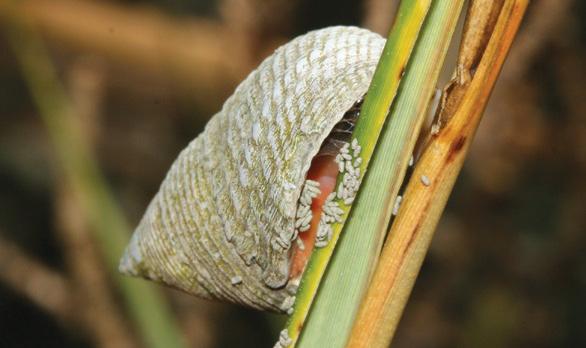
1 minute read
Did You Know?
Marsh periwinkles live by the tides. They move down marsh grass stalks at low tide and scoot back up as the tide rises to avoid predators in the water below.
Fungus Farmers
Advertisement
Marsh periwinkles are the only known mollusks that practice fungiculture. These little snails munch out holes in cordgrass and fill the holes with waste, allowing their favorite food – you guessed it, fungus, to grow on the plant.
MARSH PERIWINKLES
Littoraria irrorata
Compiled by Neva Parsons
Quick Facts
◆ Can go without food or water for days, surviving on water retained in their gills. ◆ One of their predators, blue crabs, have been known to shake marsh grass stalks hoping to detach their lunch. ◆ Sensitive to pesticides, they're an indicator species that help scientists determine the health of the salt marsh. Not to be Confused
Three other species of periwinkle can be found in our coastal waters. ◆ Zebra periwinkle, aka zig zag periwinkle, found on rocks and wood in the tideline. ◆ Cloudy periwinkles, somewhat new to the area, found almost exclusively clustered together on wood. ◆ Mangrove periwinkles, found on red mangroves. Not common, yet.
What is a marsh periwinkle? • A marine gastropod (sea snail) • A mollusk • An invertebrate (having no spine) Littoraria is of the order Littorinimorpha, and irrorata means moistened, or dewy INCH Average size of a marsh periwinkle1










